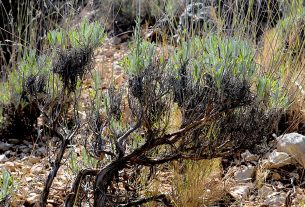Co-authors Jenna Hutchen and MJ Robertson discuss how their latest research in interdisciplinary forest science led to a topology of Knowledge Exchange practices.
Managing forests is not as simple as growing or cutting down trees. Global forest management is the complex interplay of government policies and directives, cultural and spiritual values, stakeholder perspectives, and efforts from both industry and conservationists to maintain ecological functions of forests.
No one management style perfectly combines science, policy, stakeholder needs and cultural values. What is key, though, is that these groups are able to talk to one another effectively, work together and co-create approaches to forest management.
The framework of Knowledge Exchange (KE) can help to answer these complex questions.
What is Knowledge Exchange
KE is the multi-directional flow of ideas and information between producers and users of knowledge. To understand how KE is practiced in the forest sciences, we conducted a systematic review to figure out: is there a shared language to support effective policy uptake of the best scientific information available about forestry; where is cooperation happening, and where is it lacking; and whose knowledge is being used for forest management?
Our lead author, Alana Westwood, brought us together through her own network of interdisciplinary researchers to tackle these questions. Each author on our team has a different academic background, including foresters, ecologists, sociologists and linguists.
Conducting such a massive review means needing a big team, lots of collaboration and a lot of project management. In many ways, writing this review was a taste of what KE in forestry must be like: different experts, different knowledge, different opinions, all working towards the same goal.
Reaching our goal meant screening a lot of papers. 1,166 papers to be exact. We pulled English and French papers from databases including BASE, Scopus and Research Gate. Using the international standard ROSES screening protocol for systematic reviews, we ended up with a more manageable 112 papers, including peer-reviewed articles and grey literature reports that showed evidence of KE between producer and users.
A Typology of Knowledge Exchange

We analyzed the types of knowledge exchange and defined four common types of knowledge exchange that can apply across disciplines. These include:
‘One-way exchange’, where scientists independently produce a scientific report or paper and deliver it to knowledge users.
‘Solicited exchange’, where a knowledge user expressly invites knowledge producers to tackle a pre-identified knowledge gap.
‘Network exchange’, where two or more actors come together explicitly to exchange independently generated knowledge.
‘Participatory exchange’, where potential users of scientific information are engaged and involved in the process of generating knowledge. In our study, the largest cohort of items (40%) were classified as ‘participatory exchange’, which is an encouraging sign for incorporating a diversity of ideas, knowledge sources and values.
Over 90 unique terms were used to refer to “knowledge exchange” (e.g. extension, knowledge mobilization, transfert des connaissances), most with fewer than three uses. To unite the discipline and make it easier to research and evaluate effective techniques for KE, we recommend a shared lexicon and the adoption of ‘knowledge exchange’/‘échange de connaisances’ as common terminology moving forward.

Our Findings: How and where KE is practiced in forest management
We documented instances of KE about forestry in English and French from organizations in 66 countries, and developed an interactive map to explore linkages. The Global North dominated KE, particularly between academia, NGOs and government. Much less was occurring in the Global South and industry was rarely a user of knowledge – and never a producer of it in these studies.
What really surprised us, given the growing interest in land co-management, was how few of these studies discussed working with Indigenous peoples in any country. Only 25% of articles discussed Indigenous, local, community or traditional knowledge, and most of those were theoretical frameworks, not case studies where work was done.
It is incredibly important for researchers to think critically about who gets to “produce” and who gets to “use” knowledge. There is so much knowledge and experience held in local and Indigenous communities, and in our study, this was not incorporated into KE literature.
Even on our own team – we are academics and government scientists. Therefore, we present a challenge for other researchers: when studying or working in KE don’t just think about KE as the exchange of scientific knowledge from researchers to government regulators; consider who has been excluded from those decision-making processes and use your authority to highlight those voices; consider what it means to be an author on a paper; and consider who benefits the most from knowledge exchange. Lastly, consider all of these in all environmental research spaces and not just in forestry.
Read the full Stage 2 Registered Report: “A systematic map of knowledge exchange across the science-policy interface for forest science: How can we improve consistency and effectiveness?” in Issue 4:1 of Ecological Solutions and Evidence.
Want to find out more about Registered Reports? Read this blog post by some of the leading experts in open science.

